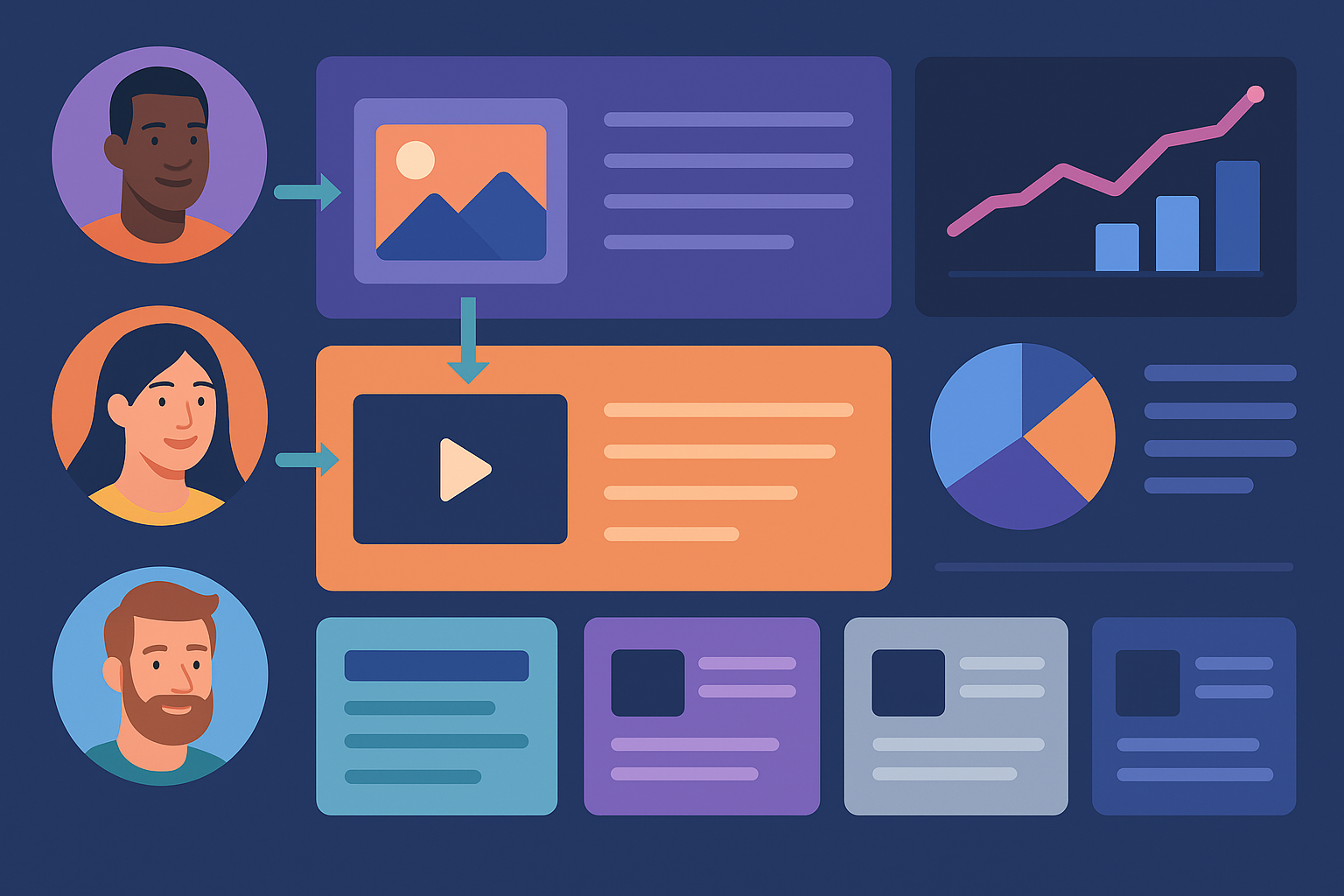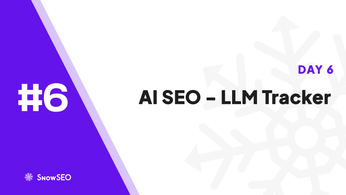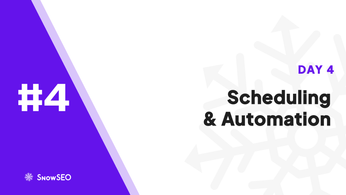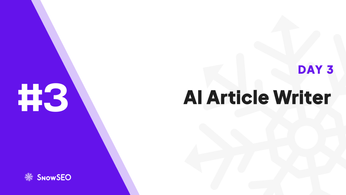
Personalized Content for SEO: Best Practices 2025
Table of Contents
Personalized content is the future of SEO, and 2025 is the year to master it. As search engines evolve to reward relevance and user experience, businesses that fail to tailor their messaging risk falling behind. Many marketers struggle to adapt to advanced SEO personalization strategies-uncertain where to begin, which tools to trust, or how to measure ROI. This article demystifies the landscape by covering proven strategies, tangible benefits, and practical examples of personalized content in action. Drawing on expert insights and real-life case studies-such as how Company Y boosted traffic by 50% through dynamic landing pages-readers will gain a clear roadmap for implementation. Whether you’re just exploring segmentation or ready to leverage AI-driven recommendations, these best practices will equip you to craft SEO content that resonates deeply with each audience segment and drives sustained growth throughout 2025.
The Evolution of SEO Personalization
Personalized content for SEO has shifted from rudimentary tweaks to hyper-tailored experiences driven by AI and deep behavioral insights. As user expectations grow, understanding SEO trends 2025 means tracing how search engines learned to serve the right result to the right person at the right moment.
Key Milestones in SEO Personalization
- Early Customization (2004–2005)
- Google first used logged-in users’ search history to adjust results.
- Introduction of SearchWiki enabled users to rearrange listings.
- Behavioral Signals (2008–2009)
- Microsoft Research’s Personalized Web Search study proved long-term click and browsing history boost relevance.
- Google scaled global personalized SERPs by factoring location, device type, and click behavior.
- Social Integration (2012)
- “Search Plus Your World” added social signals, altering top results for nearly 11% of queries.
- Third-Party Enrichment (2014)
- FTC highlighted data brokers supplying thousands of attributes per profile, elevating targeting precision.
- Transparency Concerns (2017)
- Pew Research revealed less than half of adults knew their results were personalized, spotlighting filter-bubble debates.
Important: Personalization without transparency can erode user trust and engagement.
| Year | Innovation | Impact |
|---|---|---|
| 2004 | History-based tweaks | First custom SERPs for signed-in users |
| 2008 | Behavioral graph matching | Enhanced click-through rates |
| 2012 | Social signal integration | Greater relevance but raised privacy flags |
| 2014 | Third-party data profiles | Deeper user insights, richer segmentation |
| 2017 | Awareness studies | Call for clearer personalization policies |

Benefits of Personalized Content for SEO
1. Increased Engagement and Retention
Personalized content transforms passive visitors into active brand advocates by delivering highly relevant experiences that resonate with individual interests and behaviors. When search engines detect longer session durations and lower bounce rates, they reward your site with higher rankings-creating a virtuous cycle of visibility and loyalty.
Key advantages include:
- Deeper audience connection: Tailored headlines and recommendations make readers feel understood, boosting click-through rates.
- Lower bounce rates: Dynamic content blocks reduce exit rates by guiding users to related resources.
- Repeat visits: Returning users signal quality to search engines, improving domain authority over time.

Consider the difference between generic and personalized experiences:
| Metric | Generic Content | Personalized Content |
|---|---|---|
| Average Session Duration | 1m 45s | 3m 20s |
| Bounce Rate | 62% | 28% |
| Pages per Session | 1.8 | 4.3 |
| Repeat Visitor Percentage | 19% | 45% |
Tip: Implement recommendation widgets that suggest articles or products based on user history to keep engagement soaring.
By weaving personalization into your SEO strategy, you’re not just optimizing for keywords-you’re optimizing for people. This human-centric approach drives the metrics that search engines love most, ensuring your content remains discoverable and compelling in 2025 and beyond.
How to Personalitize SEO Content Effectively
Personalizing SEO content means tailoring every touchpoint-keywords, messaging, and user journeys-based on individual preferences and behaviors. By weaving real user data into your strategy, you can deliver more relevant content that boosts engagement, conversions, and search visibility.
Using Data to Drive Personalization
Collecting and analyzing first-party user signals lays the groundwork for precise personalization. Focus on these data sources:
- Search queries and on-site click behavior
- Device type, location, and time-of-day patterns
- CRM attributes (industry, purchase history, engagement score)
- Email interactions and social media engagement
Important: Always obtain transparent consent before collecting personal data to comply with privacy regulations like GDPR and DSA.
- Segment Your Audience
Identify distinct user groups (e.g., newcomers, repeat buyers, high-value leads) using behavior and demographic data. - Map Content Journeys
Outline typical user paths for each segment, defining key touchpoints and personalized content needs. - Implement Dynamic Content
Use tools like HubSpot or Clearbit to display tailored headlines, product recommendations, or CTAs based on user attributes. - Test and Refine
Run A/B tests on personalized elements-dynamic headlines, tailored imagery-and iterate based on performance metrics.
| Data Type | Personalization Use Case | Tool Example |
|---|---|---|
| Search History | Tailored keyword suggestions | Clearbit |
| CRM Demographics | Custom landing page variations | HubSpot |
| Behavioral Triggers | Contextual pop-ups and offers | HubSpot |
| Engagement Scores | Email subject line personalization | Clearbit |
Personalization isn’t a one-and-done project; it’s an iterative process driven by ongoing data insights. By continuously refining segments and testing dynamic elements, you’ll create richer, more relevant experiences that search engines and users love.
Case Studies: Success Stories in SEO Personalization
Personalization in SEO isn’t just theory-it’s driving real revenue growth for brands that tailor content to individual preferences. Below, explore how two companies transformed their organic performance by implementing data-driven personalization strategies.
After defining clear goals and mapping buyer journeys, teams executed targeted campaigns that resonated on a personal level. Step-by-step tutorials on balancing dynamic content and user intent make replication straightforward.
From Strategy to Success
- Understanding the Audience
- Segmenting visitors by behavior, demographics, and purchase history
- Leveraging Clearbit and HubSpot integrations for enriched profiles
- Prioritizing high-intent pages for personalized offers
- Crafting Dynamic Experiences
- Deploying adaptive page elements: headlines, CTAs, product recommendations
- Testing variations with A/B and multivariate frameworks
- Monitoring engagement metrics in real time
Key Insight: 93% of businesses report increased engagement with personalized content, proving that data-backed customization is nonnegotiable.
| Company | Personalization Strategy | Outcome |
|---|---|---|
| Company Y | Customized homepage modules based on user cohort | 50% increase in organic traffic |
| Retail Co. | AI-driven product recommendations in blog posts | 35% boost in on-page time, 20% uplift in conversions |
- Company Y harnessed tiered content blocks that adapt to new vs. returning visitors.
- Retail Co. integrated machine learning to surface relevant products alongside educational articles.
Both case studies highlight how aligning personalized content with SEO goals yields stellar results. Building on these proven frameworks, your brand can replicate similar success by blending precise audience insights with agile testing methodologies.
Harness the power of hyper-personalization and urgency to turn insights into action with SnowSEO. By automating keyword research and crafting benefit-driven CTAs like “Start implementing personalized content strategies today to stay ahead,” SnowSEO helps you place high-contrast, benefit-oriented buttons above the fold for maximum impact. Integrations with your CMS mean you can instantly deploy tailored CTAs that adapt to each visitor’s journey, reducing friction and boosting conversions. With SnowSEO’s AI-driven competitor monitoring and performance tracking, you’ll know which CTAs resonate-whether it’s urgency cues that add a 14% lift or first-person phrasing that drives a 12% conversion bump Optimizing Call-to-Action Effectiveness in Blog Marketing: A Meta-Analysis. Ready to streamline your entire SEO pipeline, bridge content gaps, and watch engagement soar? Visit https://snowseo.com and start implementing personalized content strategies today to stay ahead.
Frequently Asked Questions
Q1: What is personalized content and why is it essential for SEO?
Personalized content tailors messaging to individual user preferences, behaviors, and demographics. It boosts engagement by delivering relevant information at the right moment, which reduces bounce rates and increases dwell time. Search engines reward these metrics, so websites using personalization see higher rankings and improved organic traffic as a direct result.
Q2: How can businesses implement personalized content strategies effectively?
Start by collecting first-party data through forms, surveys, and behavioral tracking. Segment audiences by interests or purchase history, then craft dynamic landing pages and email campaigns that address each segment’s unique needs. Regular A/B testing and performance analysis help refine messages, ensuring continuous optimization and stronger ROI over time.
Q3: Which tools are best for managing personalized content campaigns?
HubSpot and Clearbit lead the market with robust features for data integration, segmentation, and automated content delivery. HubSpot’s CRM-driven workflows streamline email and onsite personalization, while Clearbit enriches profiles in real time with firmographic and demographic details. Together, they offer a powerful stack to scale tailored experiences and track impact.
Conclusion
Personalized content has emerged as a non-negotiable pillar of modern SEO, driving deeper engagement and higher conversion rates.
Key Takeaways:
- Personalized content is crucial for modern SEO. Tailoring messages to individual user contexts boosts relevance and reduces bounce rates.
- Data-driven strategies enhance personalization. Leveraging analytics, machine learning, and first-party data ensures content resonates with distinct audience segments.
- Proper tools can significantly aid personalization efforts. Platforms like HubSpot and Clearbit streamline audience insights and dynamic content delivery.
Investing in personalization not only satisfies user expectations but also aligns with evolving search algorithms that reward relevance and user satisfaction.
Call to Action: Start implementing personalized content strategies today to stay ahead.
Next Steps: Evaluate your current SEO strategies for personalization opportunities, audit data collection practices, and map out targeted content variations for your highest-value segments.





